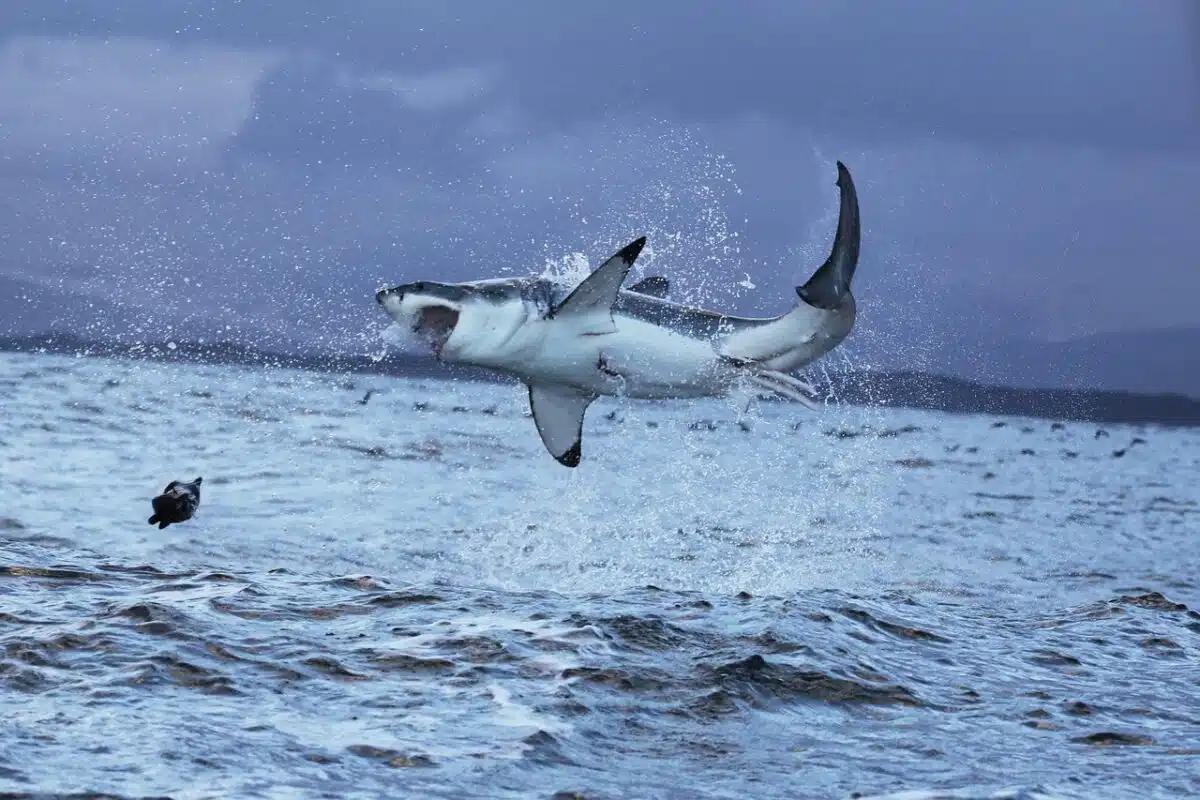Are you familiar with the mysterious ocean predators, the Great White Shark, and the Portuguese Man O’ War? Both are equally impressive sea creatures that generate awe in all who witness them. But, what makes them unique and sets them apart from one another? Are there any similarities between these two robust species, or is each its distinct entity?
In this blog post, we’ll dive deep into the lives of both these animals to compare their habitat, behavior patterns, diet habits, and much more to help you evaluate what makes each creature unique. Read on to explore the wonders of these amazing creatures!
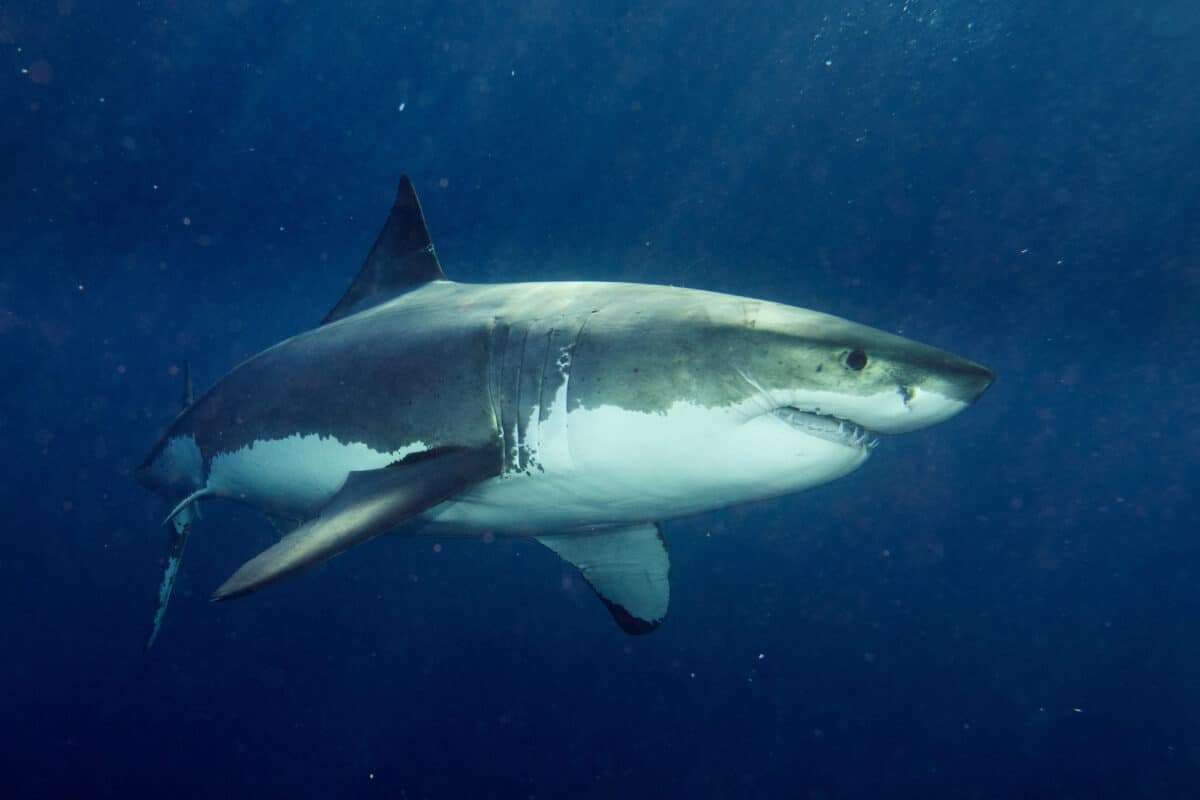
Key Points
| Great white sharks are one of the largest predatory fish in the ocean and are known for their powerful jaws and sharp teeth. Portuguese men of war, on the other hand, are not fish but rather a species of jellyfish-like siphonophore. |
| The Great White Sharks can grow up to 20 feet long and weigh over 2,000 pounds. Portuguese Man o’War can reach up to 165 feet in length. |
| They both inhabit the same environments. Portuguese men of war are often found floating on the water’s surface, while great white sharks swim below in the ocean’s depths. |
| Both the Great White Shark and the Portuguese Man O’ War are considered some of the most dangerous animals in the ocean for humans. |
Want to jump ahead? Click below
Comparison Table
| Features | The Great White Shark | Portuguese Man O’ War |
|---|---|---|
| Size | 20 feet long and weigh as much as 5,000 pounds | 100 feet in length |
| Habitat | Primarily found in all the oceans | Found mostly in warm waters, floats near the surface, propelled by the wind and ocean currents |
| Mode Of Living | Do not live collectively | Siphonophore, a colonial organism made up of individual zooids working together |
| Importance | Play an important role in keeping the oceans healthy | Helps to maintain the ecosystem of the ocean |
An Overview Of The Great White Shark
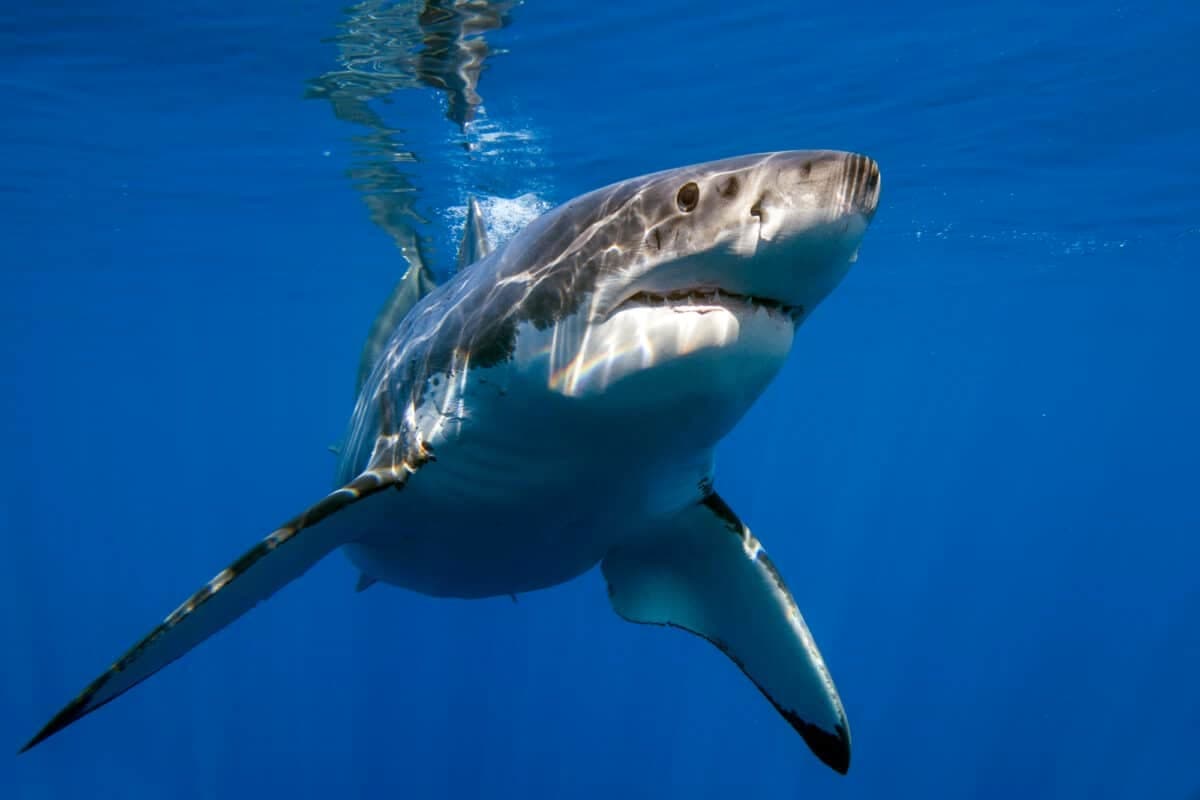
The Great White Shark is a fascinating creature that has always sparked our imagination, whether it is due to its immense size or its ferocious reputation. Found in the oceans worldwide, the Great White Shark can reach up to 20 feet long and weigh more than 5,000 pounds.
Despite its intimidating appearance, this shark is an incredible hunter, relying on its sense of smell and electroreception to locate prey. While it’s true that Great White Sharks can be dangerous to humans, the number of attacks is relatively tiny compared to the number of encounters that occur each year. Knowing more about this magnificent creature can help us better appreciate and respect the world’s oceans and their incredible diversity of life.
Behavior Of The Great White Shark
The Great White Shark is one of the most recognizable predators in the world’s oceans, partly thanks to its infamous reputation as a fearsome killer. But despite its menacing appearance, many aspects of this species remain a mystery to even the most experienced researchers.
The Great White Shark’s anatomy and behavior have long fascinated scientists and nature enthusiasts alike as they strive to understand the secrets of this formidable creature. Through careful observation and study, experts have pieced together a fascinating picture of these sharks’ lifestyles, from how they hunt to their bodies’ intricate workings.
Whether you’re a seasoned marine scientist or simply curious about the natural world, the Great White Shark will capture your imagination and leave you with a newfound appreciation for these incredible animals.
Diet And Habitat Of The Great White Shark
Great White Sharks are among the most majestic and powerful animals in the ocean. They are known for their striking appearance, but little is known about their diet and habitat. Great White Sharks typically feed on marine species, including fish, seals, and other marine mammals. They are opportunistic predators that take whatever prey is available in their environment. These sharks also have a wide range and can be found in various habitats, from coastal waters to the open ocean.
In addition, they often migrate long distances, covering thousands of miles each year. Despite their fearsome reputation, Great White Sharks play an essential role in the marine ecosystem, helping regulate other animal populations.
An Overview Of The Portuguese Man O’ War
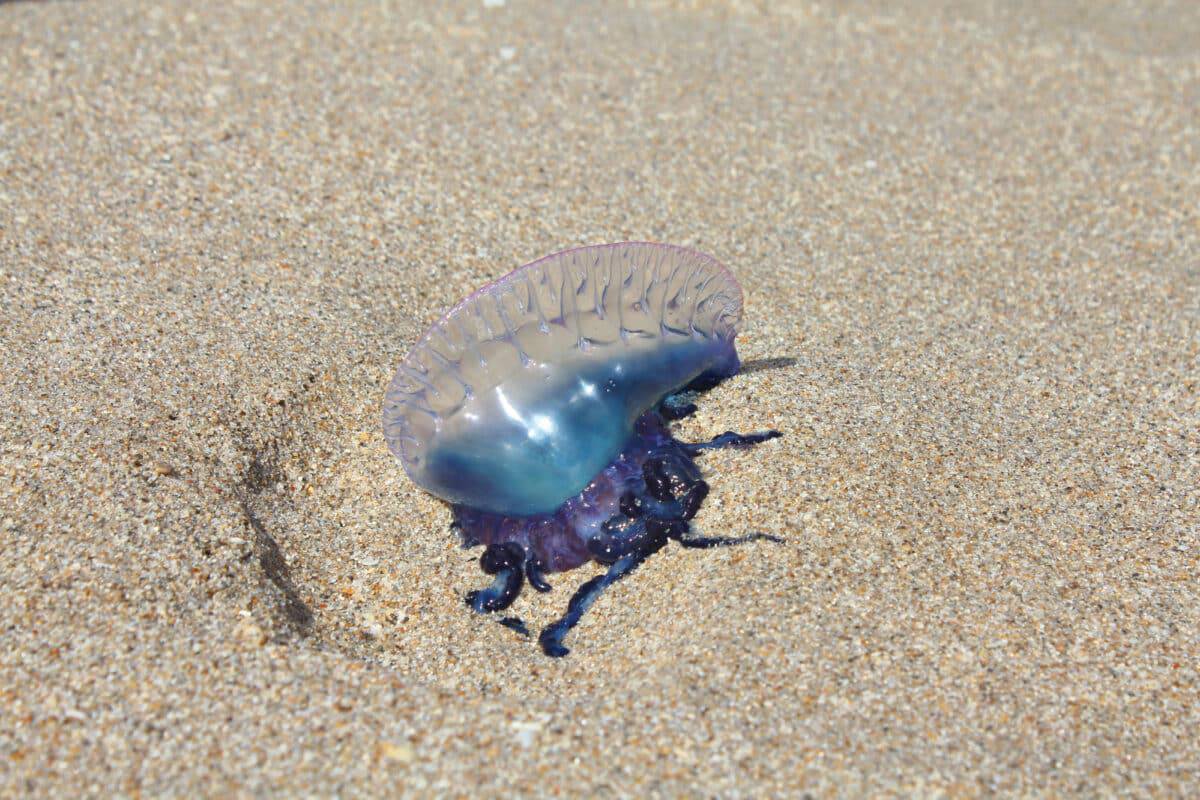
The Portuguese Man O’ War may share a name with a ship, but it’s far from something you’d want to sail on. This jellyfish-like creature is often spotted floating on the ocean’s surface, with its tentacles trailing behind it. While it may appear harmless, its tentacles carry a powerful sting that can cause pain, blistering, and even breathing difficulties in some individuals.
An even more interesting fact about this creature is that it is not a mere jellyfish but a colony of organisms working together. Its unique structure and ability to survive in various ocean environments make it a fascinating creature to learn about and observe (from a safe distance).
Anatomy And Behaviour Of The Portuguese Man O’ War
The Portuguese Man O’ War, also known as the “floating terror,” is a marine animal found in tropical and subtropical oceans across the globe. Despite their resemblance to jellyfish, they are members of the Physalia genus, consisting of four species.
These creatures have a unique anatomy that allows them to float on the water’s surface and capture prey with their long, string-like tentacles. Their venomous stings can be painful and dangerous, so keeping a distance is essential. Understanding the anatomy and behavior of the Portuguese Man O’ War can help us appreciate their unique existence and stay safe.
Diet And Habitat Of The Portuguese Man O’ War
The Portuguese Man O’ War, also known as the “floating terror,” is an invertebrate that can be found floating on the ocean’s surface. Though often mistaken for a jellyfish, the Man O’ War is a siphonophore, a colonial organism.
This fascinating creature can measure up to 30 feet in length, and its diet consists mainly of small fish and plankton. The Man O’ War’s habitat is primarily the open ocean, where it can use its gas-filled sac to float and its long tentacles to catch prey. While its stinging cells make it dangerous to humans, the Portuguese Man O’ War is integral to the ocean’s ecosystem.
To Know More, Check Out: Portuguese Man O’ War.
Conservation Efforts For Both Species
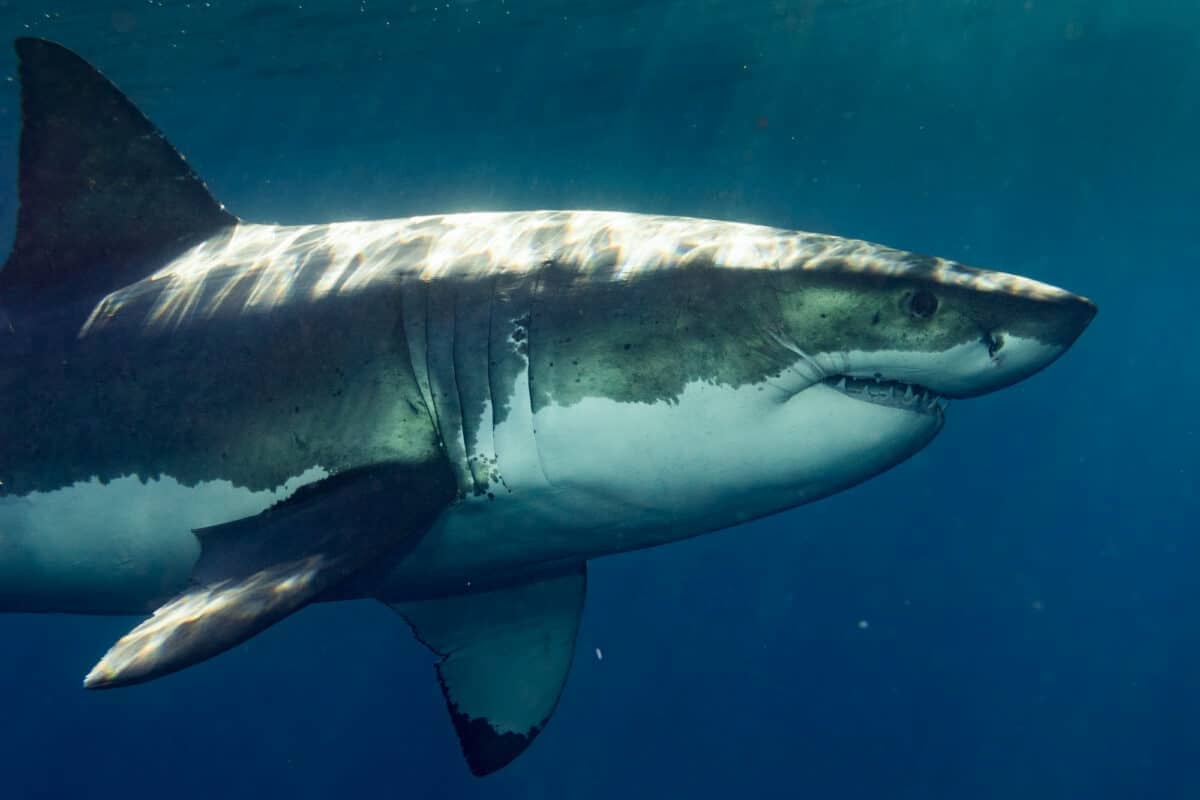
Efforts to conserve marine life have been ongoing for many years, and the two species currently in the spotlight are the Great White Shark and the Portuguese Man O’ War. These creatures are essential to the marine ecosystem and play an integral role in maintaining the balance in the ocean’s food chain.
Conservationists and marine biologists have been studying these species to gain better insight into their behavior and habitat to effectively implement measures to protect them from the harmful effects of climate change, habitat degradation, overfishing, and other human activities that threaten their survival. We can help preserve these incredible creatures through extensive research and proactive measures and ensure they continue to thrive in their natural environment for generations.
FAQs

- What Makes Great White Sharks So Special?
Great White Sharks are one of the ocean’s most iconic yet misunderstood creatures. These apex predators have a keen sense of smell and can detect prey from miles away. They are awe-inspiring animals with an average length of 15 feet and a weight of 5,000 pounds.
Despite their powerful jaws and razor-sharp teeth, they are not the mindless killers that Hollywood portrays them to be. In fact, Great White Sharks play a crucial role in maintaining balance in the ocean ecosystem by keeping populations of prey animals in check.
- What Is The Portuguese Man O’ War Known For?
Found in warm ocean waters around the world, Portuguese Man O’ Wars are known for their striking appearance and painful sting. Although they resemble jellyfish, they are a type of siphonophore – a colonial organism made up of several smaller creatures working together.
The Man O’ War’s tentacles can grow up to 165 feet in length and are covered in venom-filled cells that cause intense pain, nausea, and even respiratory distress. Despite their dangers, these creatures are fascinating to observe from a safe distance.
- Are These Animals Endangered?
The great white shark is considered a vulnerable species but not endangered. The International Union for Conservation of Nature (IUCN) lists them as vulnerable, which means they face a high risk of extinction in the wild in the medium-term future if the current threats persist.
On the other hand, the Portuguese Man O’ War is not classified as an endangered species. However, their populations can be affected by climate change, pollution, and marine debris.
Wrapping Up with Great White Shark vs. Portuguese Man O’ War
We’ve ended our dive into the fascinating world of Great White Sharks and the Portuguese Man O’ War. Despite their seemingly paradoxical relationship, sharks and jellyfish are a striking reminder of the beautiful aquatic creatures lurking beneath the ocean’s surface.
It’s important to remember that both species must be treated with respect in the wild, and neither should be handled or interfered with without proper knowledge or training. From learning about their biology, diet, and range to exploring how they differ, we hope you can walk away from this article with a newfound appreciation for two unique species.
As we move forward together, we must become mindful stewards of our environment and promote conservation efforts for each animal in our shared waters. Let this be our final take: Sharks and jellyfish might have much to learn from one another, but we’ve got plenty to gain if given a chance to witness them in their natural beauty.
Next up:
- Great White Shark Vs. Australian Box Jellyfish
- Fearsome Saw-Scaled Viper Bite
- The Great White Shark vs. The Lethal Irukandji Jellyfish
- Bald Eagle Family Expand Their Nest In California - April 24, 2024
- Firefighter Saves Abandoned Kittens Found Cuddling In Hoses - April 24, 2024
- Dolphins Get High Playing Catch With A Pufferfish - April 24, 2024

